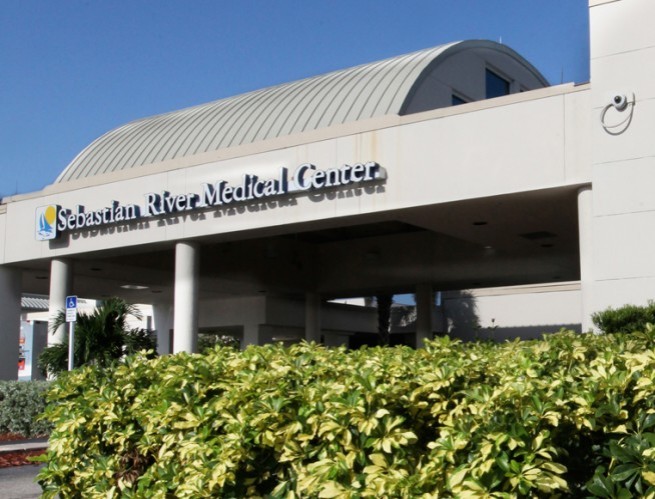SEBASTIAN — Sebastian River Medical Center CEO Steve Salyer’s plate is more than full and that includes launching pain and stroke centers this fall in partnership with the University of Florida and Shands Hospital. Work on the centers is expected to begin within the month, says Salyer, who took over the hospital’s top job nearly six months ago.
“The hospital will be working with the University of Florida on a chest pain center and a certified stroke center,” he says, noting that type of an affiliation is a plus for any institution.
“There are plenty of positive aspects to being partners with another facility or university. They are doing cutting edge things.
“We’re not just doing this on our own,” he says. “We are joining together as two entities to do the right thing for our patients. Their physicians will be available to consult with our physicians.” Salyer says the partnership will bring a higher level accountability to care and provide staff with the best practices available.
In addition to establishing the chest pain and cardiac centers, Salyer says the continued recruitment of quality physicians and the purchase of a second surgical robot are on his agenda.
“The local community here truly utilizes our doctors,” says Salyer, who came to Sebastian from Shands Starke Regional Medical Center. “They trust our physicians. They trust the level of care they will get here.
“It’s a good feeling knowing that is the case,” says Salyer. “You don’t have to repair anything here, it is not broken. “We truly have a great facility and medical staff,’” he continues. “Com Compare our quality and patient satisfaction surveys. No doubt we are superior when it comes to quality.”
The hospital recruited two physicians this summer – Dr. Carmen Crofoot, an orthopedic surgeon who joined
Dr. Kirk Mayes’ practice, and Dr. Jason Radecke, a surgeon who specializes in bariatric surgery and joined Dr. Patrick Domkowski’s practice.
“Our population is growing,” Salyer says of the addition of Crofoot and Radecke. “Radecke will help because of the community’s significant need for general surgery. Radecke is going to be an all-star here.
“We can’t meet the needs of our community if we bring in sub-par physicians,” he says.
Salyer says the recent opening of the $3 million cardiac catheterization lab and construction of the $25 million patient tower show the hospital’s commitment to both its patients and the community. Moving from semi-private to private rooms in the patient tower was something the hospital had to do, he says.
“That’s something our population expected.” In regard to other programs, Salyer says the hospital’s catheterization lab meets a big community need because of its older population. “We are preventing heart tissue from dying,” he says.
One of the hospital’s fastest growing areas is robotic surgery and Salyer says that will continue.
The robotic surgery program is growing on many fronts, Salyer says, from general and gynecological surgeries to bariatric and gallbladder surgeries. A plastic surgeon is also going to start utilizing robotics in his surgery, Salyer says.
“No doubt we’ll have to get a second robot,” he says. Robotic surgery greatly reduces hospital stays – and cost – because surgeries result in fewer complications, less bleeding and less pain, says Salyer. He estimates that robotic surgery cuts hospital stays by at least 30 percent.
Although Sebastian River Medical Center is a for-profit hospital, Salyer says, people need to know it is not just taking money out of the community. Salyer notes the hospital’s $28 million investment in the facility in the last five years and the fact it provided $23.5 million in indigent care last year.
“We refuse no patient,” he says. “We provide a tremendous amount of charity care.
“We might be a for-profit hospital but we pay taxes more than a million dollars last year,” he says.
The hospital’s enthusiastic reception in the community can be seen in the volunteers it attracts, says Sayler.
“We have a large auxiliary,” he says of the 180-member group which volunteered nearly 45,000 hours of time to the hospital last year.
“That’s a sign of the health of your facility,” Sayler says. “People are not going to volunteer if they are not proud of it.” Salyer says the consistent message he hears from volunteers is that “they love being here and look forward to it.
“They’re happy. They smile. They take pride in being affiliated with this hospital.”
Overall, Salyer says the community should be happy with the care they get at Sebastian River.
“When you walk in the door, the right thing is going to happen,” he says. “We are going to meet the competitive nature of the market with good service.
Who is going to provide better service from when patients walk in the door until they leave?”

